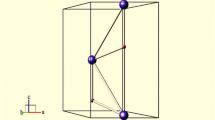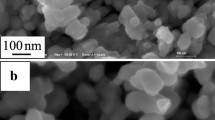Abstract
In MEMS (micro electromechanical system) devices, piezoelectric aluminum nitride (AlN) thin films are commonly used as functional material for sensing and actuating purposes. Additionally, AlN features excellent dielectric properties as well as a high chemical and thermal stability, making it also a good choice for passivation purposes for microelectronic devices. With those aspects and current trends towards minimization in mind, the dielectric reliability of thin AlN films is of utmost importance for the realization of advanced device concepts. In this study, we present results on the transversal dielectric strength of 100 nm AlN thin films deposited by dc magnetron sputtering. The dielectric strength is measured using a time-zero approach, using a fast voltage ramp to stress the film up to the point of breakdown. The measurements are performed at different device temperatures. In order to achieve statistical significance, at least 12 measurements are performed for each environment parameter set and the results are analyzed using the Weibull approach. Basically, lower breakdown fields are observed with increasing temperatures up to 300 °C with a characteristic breakdown field strength E 0 following the relationship \(\sqrt {E_{0} } \propto T\) as reported in literature for similar measurements performed at silicon nitride thin films. From the intersection of this linear behavior, the Poole–Frenkel (PF) barrier height ϕ B is determined to 0.54 eV, which is reasonable for AlN thin films. The slope of this relation is similar to values reported for silicon nitride thin films. This allows an estimation of the breakdown field at higher temperatures by extrapolation. Leakage current measurements show a dominant PF type conduction mechanism, verifying the applicability of \(\sqrt {E_{0} } \propto T\). No breakdown occurs in negative field direction, which is attributed to the metal–insulator–semiconductor configuration of the sample and hence, the presence of a depletion layer forming in the n-doped silicon and dominating the leakage current behavior.









Similar content being viewed by others
References
Ababneh A, Schmid U, Hernando J, Sánchez-Rojas JL, Seidel H (2010) The influence of sputter deposition parameters on piezoelectric and mechanical properties of AlN thin films. Mater Sci Eng B 172(3):253–258. doi:10.1016/j.mseb.2010.05.026
Ababneh A, Alsumady M, Seidel H, Manzaneque T, Hernando-García J, Sánchez-Rojas JL, Bittner A, Schmid U (2012) c-axis orientation and piezoelectric coefficients of AlN thin films sputter-deposited on titanium bottom electrodes. Appl Surf Sci 259:59–65. doi:10.1016/j.apsusc.2012.06.086
Ambacher O (1998) Growth and applications of Group III-nitrides. J Phys D Appl Phys 31(20):2653
Hassine NB, Mercier D, Renaux P, Parat G, Basrour S, Waltz P, Chappaz C, Ancey P, Blonkowski S (2009) Dielectrical properties of metal-insulator-metal aluminum nitride structures: measurement and modeling. J Appl Phys 105(4):044111-1–044111-10
Klootwijk JH, Verweij JF, Rem JB, Bijlsma S (1996) Dielectric breakdown II: related projects at the University of Twente. Microelectron J 27(7):623–632
Kolodzey J, Chowdhury EA, Adam TN, Guohua Q, Rau I, Olowolafe JO, Suehle JS, Yuan C (2000) Electrical conduction and dielectric breakdown in aluminum oxide insulators on silicon. IEEE Trans Electron Devices 47(1):121–128. doi:10.1109/16.817577
Schneider M, Bittner A, Patocka F, Stoger-Pollach M, Halwax E, Schmid U (2012) Impact of the surface-near silicon substrate properties on the microstructure of sputter-deposited AlN thin films. Appl Phys Lett 101(22):221602–221604
Schneider M, Bittner A, Schmid U (2013a) Investigation on the dielectric behavior of aluminum nitride thin films at different temperatures applying a time-zero approach. In: Proc. SPIE Conference “Smart Sensors, Actuators and MEMS”, vol. 8763, no. 87631X, 24.4.2013–26.4.2013, Grenoble
Schneider M, Strunz T, Bittner A, Schmid U (2013b) Impact of sputter deposition parameters on the leakage current behavior of aluminum nitride thin films. Adv Sci Technol 77:29–34
Schroder DK (2006) Semiconductor material and device characterization, 3rd edn. Wiley, New Jersey
Stathis JH (1999) Percolation models for gate oxide breakdown. J Appl Phys 86(10):5757–5766
Strite S, Morkoc H (1992) GaN, AlN, and InN: a review. J Vac Sci Technol B 10(4):1237–1266
Sune J (2001) New physics-based analytic approach to the thin-oxide breakdown statistics. IEEE Electron Device Lett 22(6):296–298. doi:10.1109/55.924847
Sze SM (1967) Current transport and maximum dielectric strength of silicon nitride films. J Appl Phys 38(7):2951–2956
Sze SM, Ng KK (2006) Physics of semiconductor devices, 3rd edn. Wiley-Blackwell, New Jersey
Tadigadapa S, Mateti K (2009) Piezoelectric MEMS sensors: state-of-the-art and perspectives. Meas Sci Technol 20(9):092001
Verweij JF, Klootwijk JH (1996) Dielectric breakdown I: a review of oxide breakdown. Microelectron J 27(7):611–622
Wu E, Suñé J, Lai W, Nowak E, McKenna J, Vayshenker A, Harmon D (2002) Interplay of voltage and temperature acceleration of oxide breakdown for ultra-thin gate oxides. Solid State Electron 46(11):1787–1798. doi:10.1016/S0038-1101(02)00151-X
Wu YQ, Lin HC, Ye PD, Wilk GD (2007) Current transport and maximum dielectric strength of atomic-layer-deposited ultrathin Al2O3 on GaAs. Appl Phys Lett 90(7):072105-1–072105-3
Author information
Authors and Affiliations
Corresponding author
Rights and permissions
About this article
Cite this article
Schneider, M., Bittner, A. & Schmid, U. Temperature dependant dielectric breakdown of sputter-deposited AlN thin films using a time-zero approach. Microsyst Technol 20, 751–757 (2014). https://doi.org/10.1007/s00542-013-2027-1
Received:
Accepted:
Published:
Issue Date:
DOI: https://doi.org/10.1007/s00542-013-2027-1




